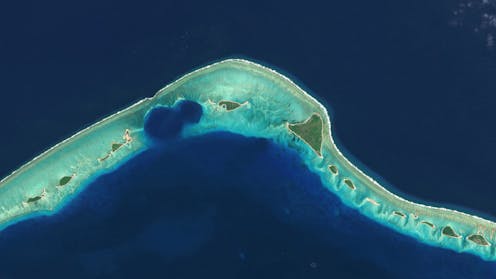Source: The Conversation – UK – By Ian Mell, Professor in Environmental & Landscape Planning, University of Manchester
Tens of thousands of fans streamed into Manchester’s Heaton Park this summer to see Oasis return home. Over 400,000 people attended across five nights of the much-hyped reunion tour.
But the joy came at a price. For more than eight weeks, large parts of Heaton Park were fenced off and heavily secured, restricting everyday use. Families, dog-walkers and runners were displaced, and the effects rippled far beyond the park gates.
The park regularly hosts food festivals and the music festival Park Life, but Oasis was of a different scale. The concerts effectively turned much of the park into a private venue, accessible only to ticket holders and staff. Residents complained of overcrowded trams, gridlocked roads and children struggling to get home from school. What is usually Manchester’s largest green space became, in some people’s minds, a no-go zone for two months.
Local governments insist such events bring much-needed revenue. Manchester City Council has not reported a specific fee for Oasis to use Heaton Park, although it has been said that around £25,000 has been allocated to fund local projects. (At time of publication, the council had not replied to our request for clarification about the fee.)
Pubs and restaurants thrived on concertgoers, and taxi drivers got a ready-made source of customers who would pay whatever it took. The city itself basked in the global spotlight of a high-profile homecoming.
Yet the downsides for locals were obvious: noise, antisocial behaviour, litter and congestion, as well as the general fatigue of not being able to go about their daily business. Afterwards, many felt the grass and grounds had been left in a poor state, raising questions of how much – if any – of the fee would be reinvested in the park itself.
This fuels scepticism: a multi-million pound tour gives the council a relatively small fee, while thousands of locals absorb the inconvenience. In my view, people are right to wonder whether public parks should be used to support these enterprises.
The Oasis shows tap into a wider debate about the use of public parks for festivals and events. Why is a space designed for community relaxation doubling up as a mega-venue? Why not use a stadium or arena purpose-built for huge crowds? And why don’t local councils charge far greater fees to permit such events, and properly enforce penalties for any damage?
Heaton Park is not unique. Sefton Park in Liverpool and Finsbury Park in London have hosted major festivals including Africa Oye and Wireless for over a decade respectively, provoking annual complaints about noise and disruption. Each time, local councils stress the economic upside, while residents question whether public green spaces are being commercialised at their expense.
Why councils say yes
In my experience, many local authorities simply feel they cannot afford to say no. Years of budget cuts mean councils must “sweat” every asset they own. Large parks, especially those with capacity for mass gatherings, are among the few resources left to monetise.
Cultural prestige also matters. Hosting a band like Oasis in their hometown generates pride and attention that no council will want to turn away.
But if parks are to be used in this way, the terms should be stronger. The reported £25,000 fee is minimal when set against the profits of a five-night run: 80,000 people paying £100 or more each over five nights adds up to around £40 million in revenue. (In fact, many people paid hundreds and even thousands of pounds to attend the Oasis gigs.)
Councils could charge significantly more, with some of the revenue ring-fenced to fund park management and improvements, and contracts that cover damage to the park.
So, did Oasis ruin Heaton Park? Not exactly. The concerts were a cultural phenomenon for Manchester and a source of joy for thousands of fans. But they also highlighted how public parks are being commercialised to plug council finances, often with limited benefit to those who most need them.
If local authorities continue to hire out green spaces to private promoters, they should rethink the terms. At the very least, residents deserve more input, and a fairer share of the rewards.
![]()
Ian Mell does not work for, consult, own shares in or receive funding from any company or organisation that would benefit from this article, and has disclosed no relevant affiliations beyond their academic appointment.
– ref. Parks are public spaces – but private event organisers are muscling in – https://theconversation.com/parks-are-public-spaces-but-private-event-organisers-are-muscling-in-262063






